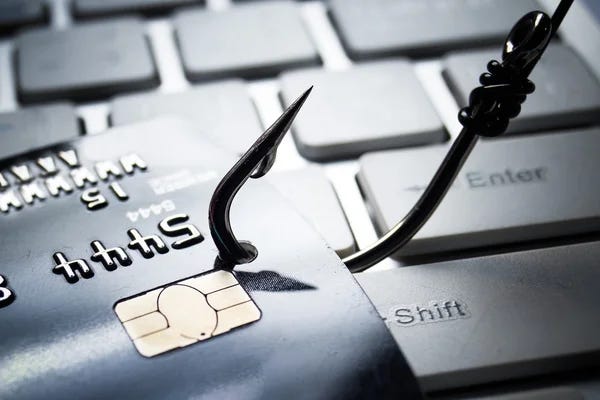How to Spot and Avoid Phishing Scams: Protecting Yourself In A World That Won't
Every Tuesday, we break down complex security topics into simple, effective strategies—so you can focus on what you do best without fear of being compromised.
In an era of cyber threats, financial fraud, and ever-evolving scams, taking control of your security is no longer optional; it’s essential. Protecting Yourself in a World That Won’t is a blog series dedicated to equipping individuals, entrepreneurs, and microbusinesses with the knowledge and tools needed to safeguard their digital and financial lives.
The digital horizon is vast and ours for the taking; however, this also means that there is plenty of space for digital crimes to take place, and little understanding or legislation to stop it.
Phishing scams are a prevalent and dangerous form of cybercrime that target individuals and organizations to steal sensitive information.
These scams often target vulnerable communities and prey on fear and lack of security, leading to financial losses, identity theft, and stolen personal information.
In this blog post, we'll explore how to recognize phishing attempts and provide practical tips to avoid falling victim to these scams.
Understanding Phishing Scams
Being aware of phishing tactics is the first step towards protecting yourself in the digital world.
Phishing is a type of cyber-attack where malevolent actors impersonate real and legitimate people, companies, and other important entities to trick individuals into providing personal information.
Phishers may ask for personal information like passwords, credit card numbers, or social security numbers. They may also ask you to buy gift cards and send them the numbers, or log into your bank account and send them the confirmation code
The common goal of phishing scams is to steal personal information, financial data, and/or important credentials.
Types of Phishing
Phishing comes in many different forms, which makes it hard to detect. It is important to always be vigilant and scrutinize sensitive correspondence closely.
Email Phishing
The most common form of phishing is email phishing. This is where attacks send fraudulent emails that appear to be from reputable sources.
To identify a phishing email, Look for generic greetings (e.g., "Dear Customer"), urgent requests, and poor grammar or spelling mistakes.
Legitimate companies usually address you by name and use professional language. If the email is posing as someone you know personally, compare the use of language to other correspondences.
Furthermore, check the address that the email is being sent from.
Often, these will mimic legitimate addresses but will include slight misspellings or unusual domain names.
You should also practice caution with unexpected attachments, especially from unknown senders.
These can contain malware designed to steal your information.
If you suspect an email is a phishing scam, do not click on any links it contains, respond, or follow any of the steps the email instructs.
You should always report emails you suspect of phishing.
If one of these correspondences implicate your business or your company, it is important to let your colleagues know of the nature of the email so that they can stay informed.
SMS Phishing (Smishing)
If you live in the state of Pennsylvania, chances are, you have received a text that looks like this.
This is an example of a Smishing text, or a phishing scam conducted over SMS messaging. These messages have the same goal as email phishing, but use text messaging to trick their victims in a familiar situation.
Voice Phishing (Vishing)
Voice Phishing (Vishing) is a scam that is conducted over the phone where a malevolent actor is posing as a legitimate person or entity.
In these instances, the scammer may pose offers that seem too good to be true. If you suspect you have received a Vishing call, you can call the official contact number of the entity or person they are claiming to represent and ask to verify.
Real World Examples
Phishing can happen to anyone and everyone. In fact, it happened to me just this past month. I received an email impersonating one of my superiors, asking me to purchase gift cards for my coworkers for their hard work.
Now, while it is true that my coworkers are incredibly hardworking, this person contacted me over my personal email, which my superior would not do. Their email signature was also very different from what I had come to suspect. For these reasons, I reported the email as phishing and reported the occurrence to my coworkers so that they may be aware of similar correspondence in their inboxes.
Around election seasons, you may have received calls from unknown numbers asking you to donate to a specific campaign over the phone without a verified source.
Protecting Against The Threat
Phishing scams are a serious threat that show the necessity of staying vigilant and robust with your security measures.
You have the power to protect yourself and your personal information. Remember to always be cautious of suspicious correspondence over email, text, or the phone. Educate yourself on common phishing tactics and secure your accounts accordingly.
It is always better to be hyper vigilant and prepared than risk your personal information.
By following these guidelines, you can reduce the risk of falling victim to phishing scams and help create a safer online environment for everyone.
How We Are Here To Help:
At art|Works Initiative, members have access to security resources and qualified personnel that can help protect them. Our dedicated staff is available to screen any suspicious correspondence you may receive.
We are here to help you do what you do best; that includes keeping your information safe. If you have any questions or concerns, you can find us at The Longview Gallery every Friday for "Work from the Office Fridays" or stop by any Wednesday during Office Hours with our IT team. We're always ready to help troubleshoot and answer any questions you may have.





